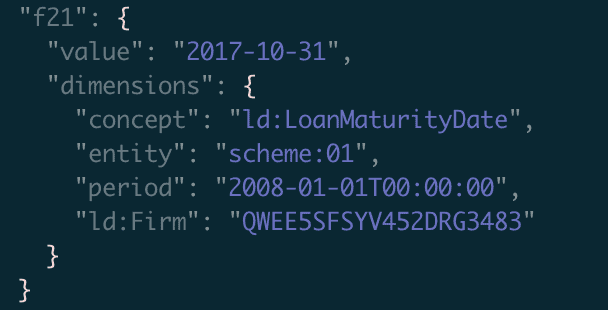CoreFiling Blog
The Inline XBRL Validation Stack
1. Well-formedness To be machine-readable, XML has to be well formed. Attributes have to be enclosed in quotes; certain characters have to be escaped; all opening tags have to be matched with closing tags. A human reader may recognise easily that a closing tag has...
Schemas and XBRL
The invention of schemas to provide formal definition of the contents of XML documents was one of the most important innovations accompanying the creation of the World Wide Web. For the first time, it was possible to develop a generic data validator which was...
Learning UX Design with the Interaction Design Foundation – a review
I first came across the Interaction Design Foundation about 18 months ago when my father-in-law, a data analyst at a large accountancy firm, told me that he’d been enjoying some of their content and thought I might like it too. He was right – in my role as Quality...
ESEF – Filing in iXBRL or XHTML?
The ESEF RTS - (EU) 2018/815 - says: (2) Issuers should prepare their entire annual financial reports in the Extensible Hypertext Markup Language (XHTML) format...(4) ...consolidated financial statements in annual financial reports prepared either in accordance with...
Making ESEF Filing Business As Usual
Following on from our announcement that the True North Data Platform is ready for ESEF, we want to share a little about how our approach to ESEF simplifies and streamlines the user experience. Around 5,000 issuers across Europe will have to produce annual financial...
The Open Information Model
XBRL - the good parts There's a lot to like about XBRL. After centuries of paper, and decades of opaque and proprietary digital formats, XBRL was the breakthrough technology that allowed business reports to be exchanged quickly, widely and reliably. XBRL is a mature...
Taxonomies As Easy As One-Two-Three
When CoreFiling undertook a survey of data collectors, we found a core message coming through: “Writing taxonomies should be as easy as possible and as automated as possible!” CoreFiling took this on board when moving our Taxonomy Management System (TMS) out of the...
XBRL Data Collection: The Four Data Quality Rules
Business rules can be found throughout regulatory reporting programmes, with everything from proportionality to supervisory process defined in a single rulebook. Automation of these rules allows regulators to reduce the cost of regulation and free up specialists from...
XBRL Data Collection: Increase Value and Reduce Cost at the Same Time!
Most, if not all, data collectors want to maximise the quality of their data and minimise the reporting burden on their filers. Many decisions about how to run a filing program lead to trade-offs between these measures. An example of this is filing rules, where the...








